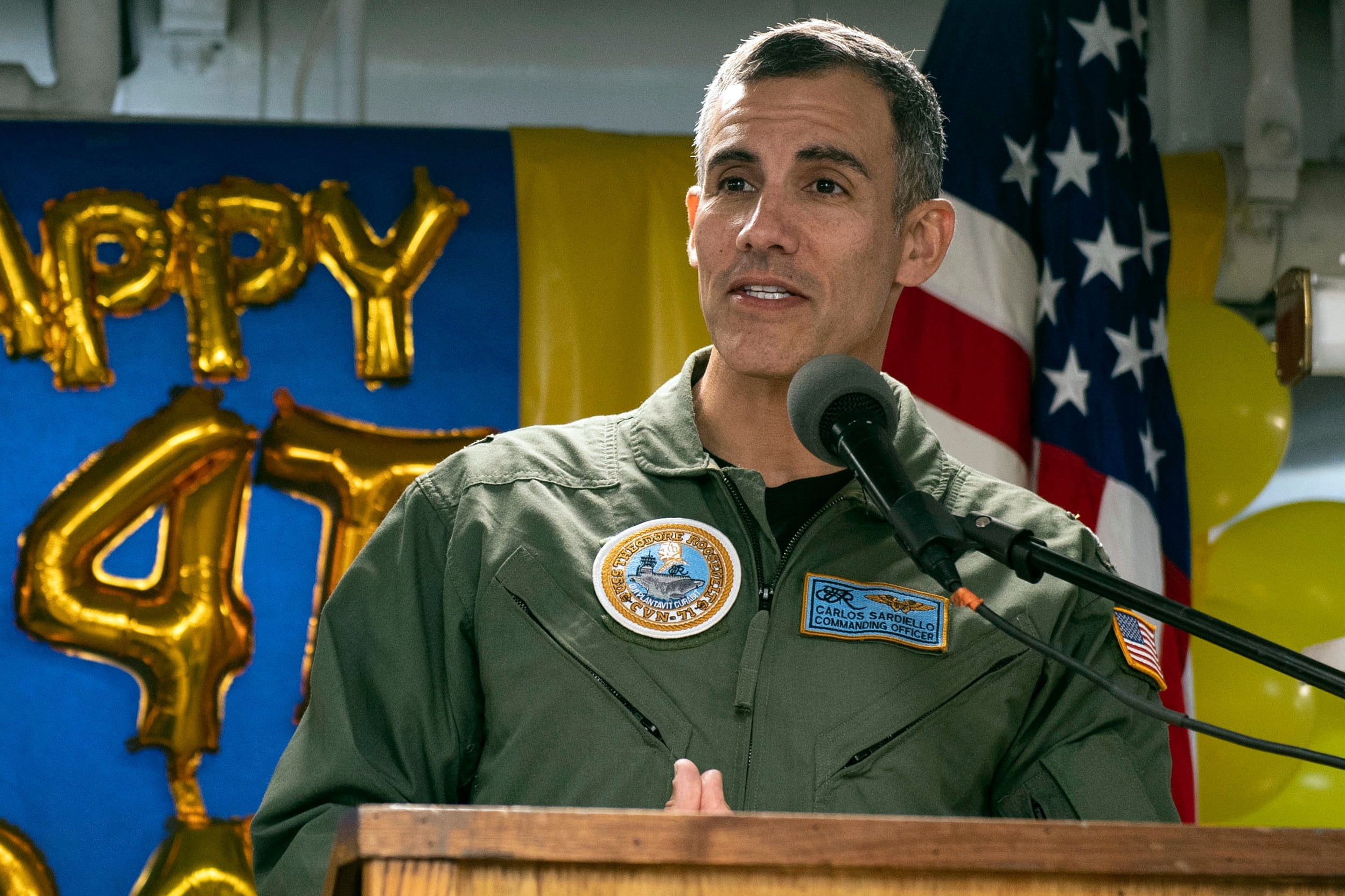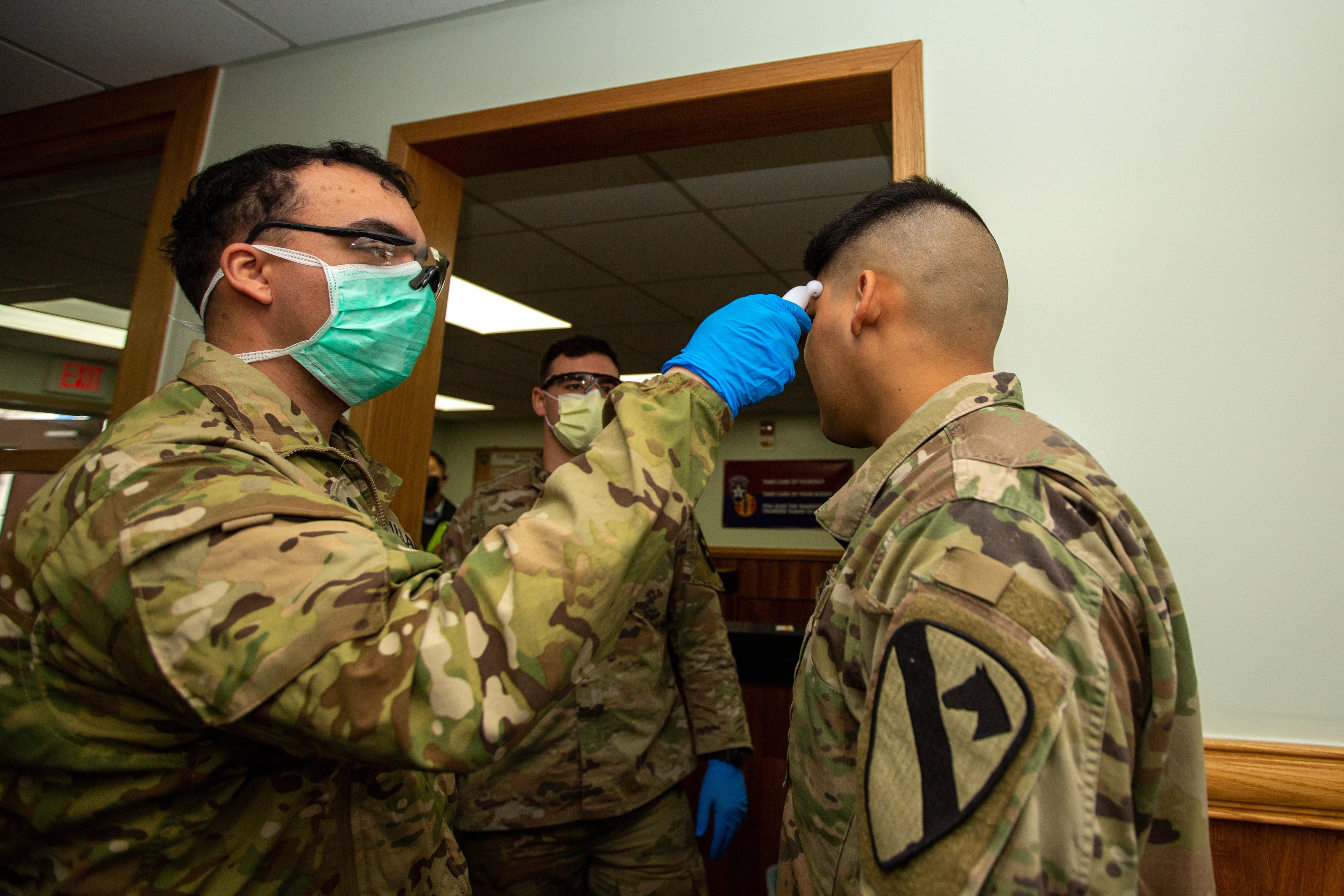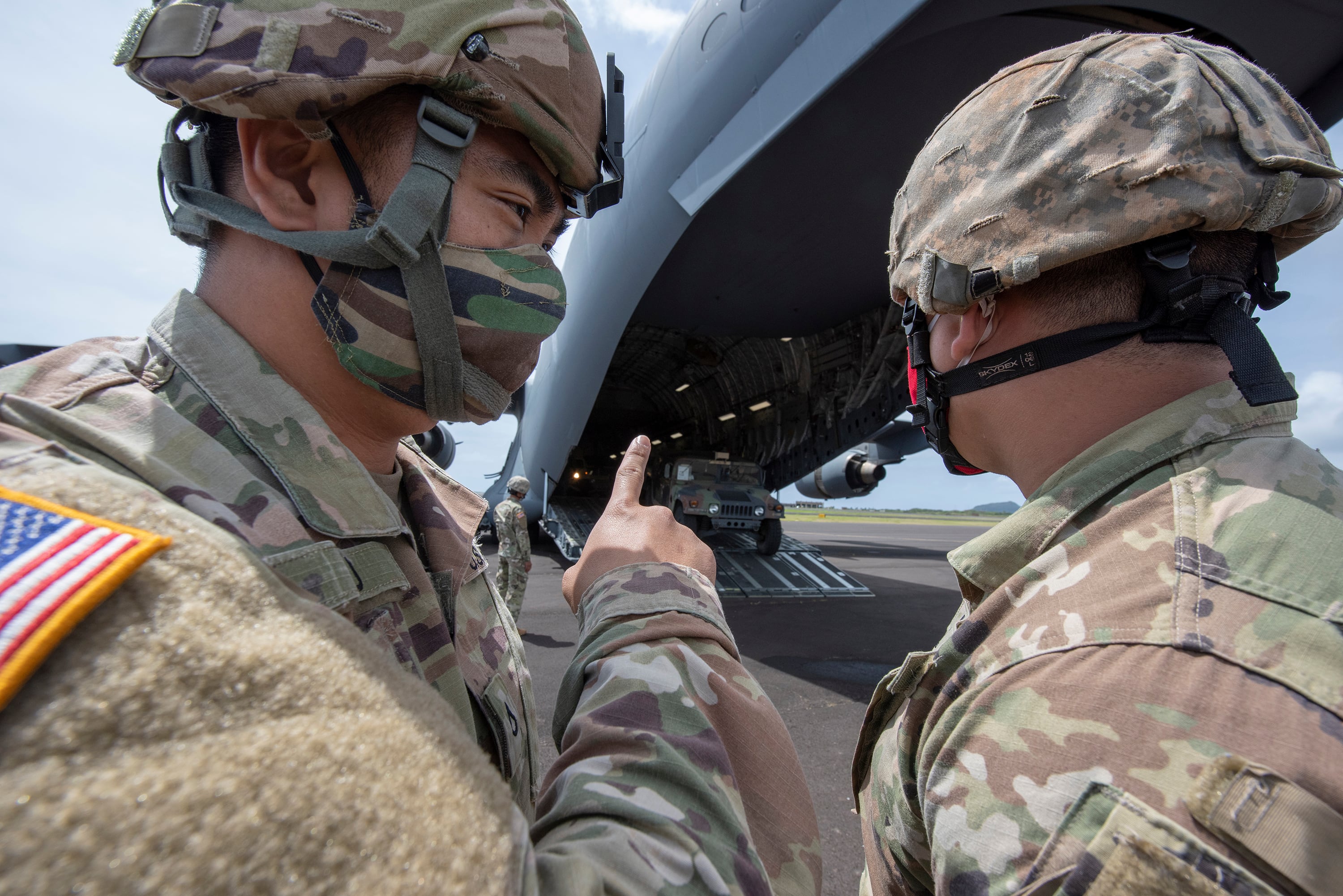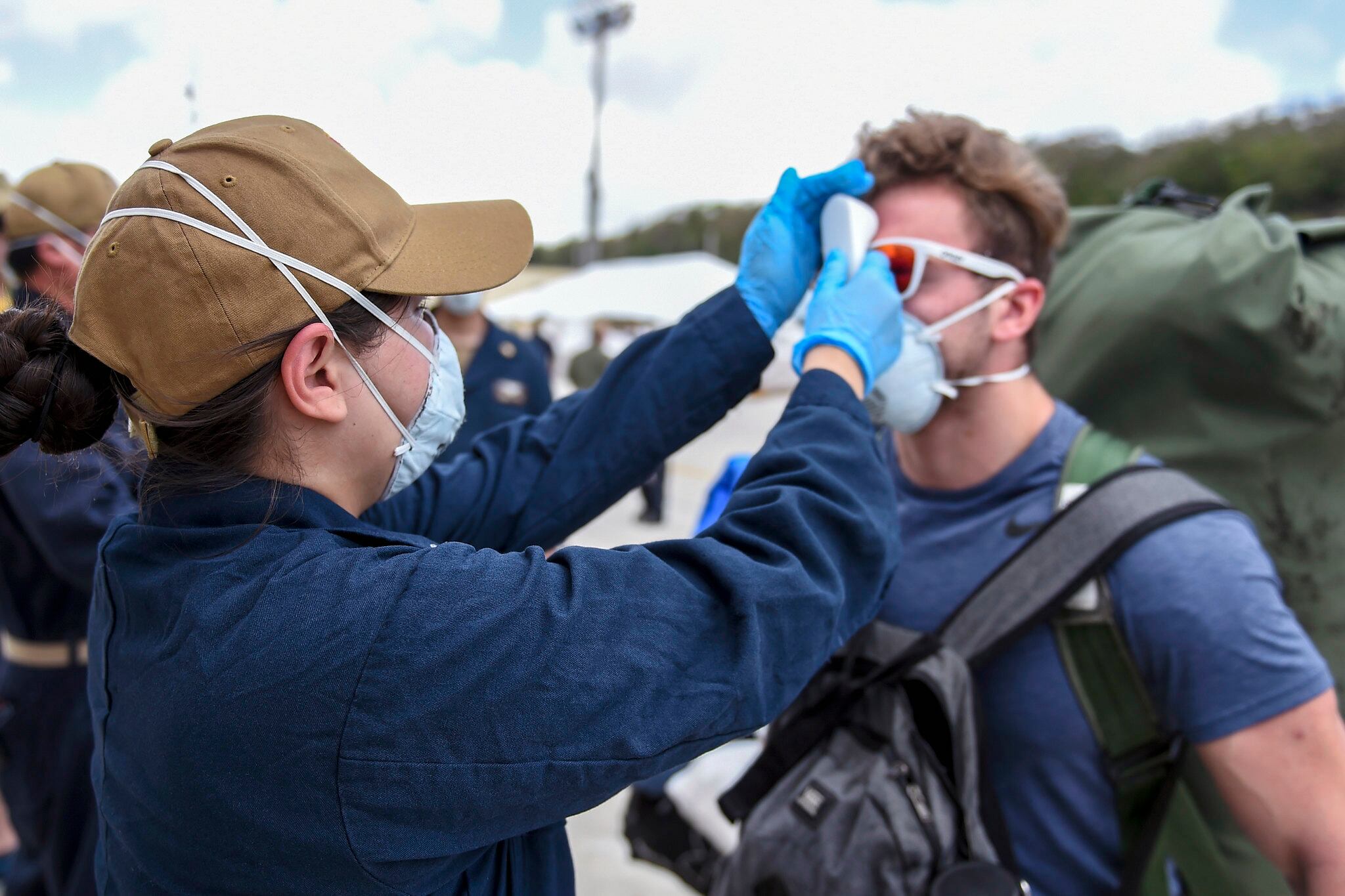The Navy has stopped making public the number of sailors infected with COVID-19 aboard the aircraft carrier Theodore Roosevelt and the destroyer Kidd.
Its last daily update for the stricken ships came on Thursday and was followed by a notice that the public should no longer expect daily tallies.
“The Navy has tested 100% of the crews of (the TR and Kidd),” the service said last week. “As a result, following this report, the Navy will only report significant changes on these vessels and new cases on any other deployed vessels.”
Rear Adm. Charles Brown, the Navy’s head spokesman, said Wednesday that with testing of crews on both ships complete, the sea service does not expect a significant change to case numbers.
“It that did change, if we had outbreaks on any other ships, we would continue to put those numbers out,” Brown said.
He said there had not been significant changes in case numbers on either ship since last Thursday.
“I would argue we have been as transparent as anyone,” Brown added.
RELATED

As of last Thursday, there were 78 active cases aboard the Kidd and 1,102 active cases aboard TR, numbers that represent nearly three-quarters of all active Navy sailor, civilian, contractor, and dependent active cases reported.
The about-face on disclosure followed a March 30 statement by Defense Department Press Secretary Alyssa Farah announcing that individual unit, command and base-level outbreak numbers would not be made public “out of a concern for operational security with regard to readiness.”
On Friday, Jonathan Hoffman, the Pentagon’s chief spokesman, said an exception had been made regarding TR and Kidd outbreak numbers due to “understandable and reasonable public scrutiny,” but that the time for such transparency had passed.
“We believe that we have moved past a point where the daily updates are providing useful information for public conversation,” Hoffman said.
“We wanted to get out of the pattern of providing a daily tracker of minor changes in this and I think that’s a reasonable place to be.”
RELATED

It remains unclear how the novel coronavirus made its way onboard the Kidd, Vice Adm. Phillip Sawyer, deputy chief of naval operations for operations, plans and strategy, told reporters Wednesday.
The warship deployed in January to the Indo-Pacific and later U.S. Southern Command waters.
“We really don’t know and that’s the challenge of this virus,” Sawyer said. “People can be asymptomatic and they can pass (the virus)."
Measures put in place to mitigate spread are “not perfect,” he noted.
“There are those seams and that’s why the virus can sneak in on us,” Sawyer said. “We just take as much precaution as much as we possibly can. ... It didn’t work on the Kidd.”
Soon-to-deploy ships and subs are implementing a bubble mentality to prevent outbreaks like those seen aboard the two ships, according to Sawyer.
Crews are undergoing at least two weeks of so-called “restriction of movement” and are getting tested before they get on board their vessel.
When it came to the aircraft carrier Nimitz, its air wing and escorts, Sawyer said all sailors underwent two to three weeks of isolation before getting underway for training last week.
“As they got near the end of that period, we tested them out … to make sure that if there were any asymptomatic people, we have the best possible chance of finding them, and if we did, we removed them,” Sawyer said.
The novel coronavirus is also changing the way supplies and personnel are delivered to carriers on deployment via carrier onboard delivery, or COD, flights.
Flight crews are having their movement restricted if ashore, Sawyer said.
RELATED

“The real key we’re working toward is keeping them onboard the ship,” said Sawyer, who added that the Navy has already had success in reducing the number of COD flights onto carriers out in U.S. 5th Fleet.
“They’ve given us a pretty good model to minimize those vectors into the bubble. We’re replicating that across the force.”
New techniques are also being used to decontaminate cargo and packages that come on board.
“We want to make sure we prevent bursting that bubble by bringing others in who may not have done that same level of restriction of movement and testing,” Sawyer said.
Similar precautions are being taken in the submarine community, he said, and are doubly important given the cramped confines of the boats.
“To date we’ve had no active cases onboard our deployed submarines and underway submarines,” Sawyer said. “The level of closeness down there really, really requires a high degree of cleaning and abiding by all the public health measures that we know. I expect them to be able to execute that.”
While sharing information with civilian authorities on public health lessons learned from the TR outbreak, Sawyer said the Navy’s core pre-COVID-19 missions continue “almost unabated.”
“We’ll continue to morph and evolve as we, the nation and the world learn more about this virus,” Sawyer said.
Military Times reporter Meghann Myers contributed to this report.
Geoff is the managing editor of Military Times, but he still loves writing stories. He covered Iraq and Afghanistan extensively and was a reporter at the Chicago Tribune. He welcomes any and all kinds of tips at geoffz@militarytimes.com.





